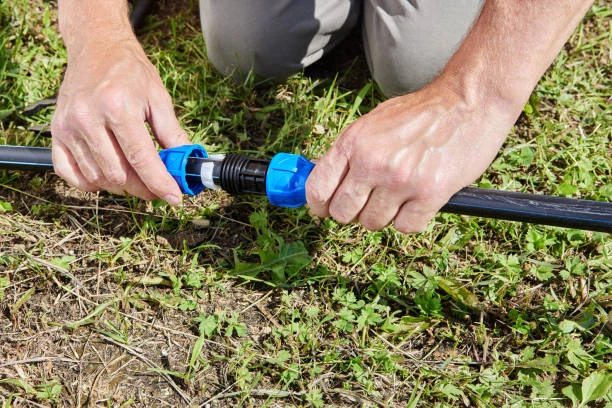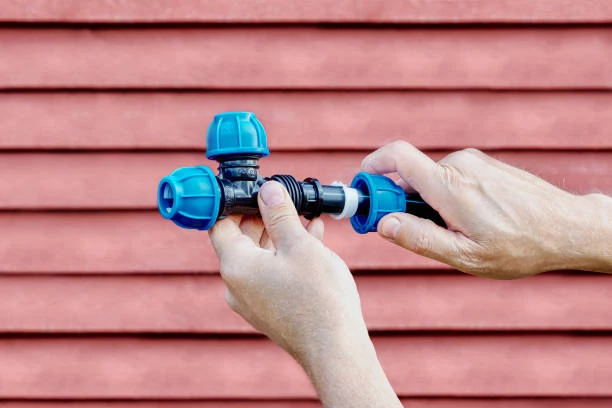The plastic pipe manufacturing industry has long been a profitable sector within the global construction and infrastructure markets. With the growing demand for durable, cost-effective piping solutions, manufacturers in this field have enjoyed high margins and consistent growth. However, recent market dynamics, including rising raw material costs, regulatory pressures, and the increasing competition from alternative materials, are making it increasingly challenging for plastic pipe makers to maintain the high-profit margins they’ve enjoyed in the past. In this article, we will explore the factors impacting the sustainability of high margins for plastic pipe manufacturers and what the future holds for the industry.
Understanding the Profitability of Plastic Pipe Makers
Strong Demand for Plastic Pipes
For years, plastic pipes have been the material of choice for many infrastructure projects, ranging from water distribution systems to sewage management and industrial applications. Their advantages—lightweight construction, durability, corrosion resistance, and ease of installation—have made them a reliable option for contractors and engineers around the world. This demand has led to high margins for plastic pipe makers, who have been able to leverage these benefits while enjoying strong sales and profitability.
One of the primary drivers of plastic pipe demand is the increasing need for infrastructure development, particularly in emerging economies. The adoption of plastic pipes in developed countries has also grown, as municipalities and utilities look to replace outdated, aging infrastructure with more sustainable and efficient materials. As a result, plastic pipe makers have had consistent access to a wide market and have been able to maintain favorable profit margins.
The Key Factors Behind High Margins
For plastic pipe makers, several factors have contributed to high margins over the past decade. These include:
- Low Manufacturing Costs: Compared to materials like steel or concrete, plastic pipes are cheaper to manufacture. The raw materials, such as PVC, PE, or PP, are more cost-effective, and the production process is less energy-intensive.
- Long Lifespan and Low Maintenance: Plastic pipes have a longer service life and require less maintenance than alternatives like metal pipes, making them more attractive for both consumers and municipalities. This has resulted in fewer replacements and repairs, contributing to the overall profitability of pipe makers.
- Sustainability and Environmental Benefits: Increasing emphasis on sustainability has driven demand for plastic pipes due to their recyclability and lower environmental footprint. With concerns over climate change and environmental degradation, consumers and companies are gravitating towards eco-friendly materials like plastic pipes.
These factors have created a favorable environment for plastic pipe makers, driving both growth and high margins.
Rising Costs and Raw Material Shortages in Plastic Pipe Makers
The Impact of Rising Raw Material Prices
While the plastic pipe industry has seen tremendous growth, plastic pipe makers now face new challenges that threaten their profitability. One of the most significant factors is the rising cost of raw materials. The prices of plastics like PVC, PE, and PP have increased dramatically in recent years, driven by global supply chain disruptions, inflationary pressures, and increasing demand for plastic across various industries.
For example, PVC, a key material used in plastic pipe manufacturing, has been subject to significant price hikes due to fluctuations in the petrochemical market, energy costs, and availability of feedstock. These increases in raw material prices have put pressure on plastic pipe makers to either absorb the costs or pass them on to consumers, which can impact their margin sustainability.
Supply Chain Disruptions
The COVID-19 pandemic triggered supply chain disruptions across industries, including the plastic pipe manufacturing sector. The shortage of key components, delays in shipping, and limited access to raw materials have resulted in higher operational costs for manufacturers. These disruptions continue to affect the global market, making it difficult for plastic pipe makers to maintain profitability at previous levels.
As the supply chain challenges persist, manufacturers will likely face increased costs for shipping and raw materials, which could erode margins further. Smaller and mid-sized pipe makers may struggle to manage these costs, potentially leading to a consolidation of the industry as larger companies with stronger financial resources are better equipped to weather the storm.

Increasing Competition from Alternative Materials in Plastic Pipe Makers
The Rise of Green and Sustainable Materials
Another challenge facing plastic pipe makers is the increasing competition from alternative materials that are perceived to be more environmentally friendly. Materials like HDPE (high-density polyethylene) and PP (polypropylene) are gaining popularity due to their recyclability and lower environmental impact. However, even more sustainable alternatives such as HDPE pipes for water and gas distribution are increasingly being pushed by regulatory frameworks that incentivize more eco-friendly construction materials.
Moreover, the construction industry is increasingly experimenting with composite materials and alternative piping solutions. These materials offer unique advantages, such as enhanced strength, lower weight, or a reduced environmental footprint, which can drive down demand for plastic pipes.
As more sustainable and energy-efficient materials are developed, plastic pipe makers may face pressure to innovate in order to maintain market share. This could lead to increased competition, which in turn might squeeze margins for traditional plastic pipe manufacturers.
Industry Consolidation and Price Pressures
The increased competition from alternative materials and larger multinational manufacturers could drive consolidation in the plastic pipe makers sector. Companies that are unable to adapt to the evolving market dynamics might struggle to remain profitable. As competition increases, manufacturers will likely face more pressure to cut costs, lower prices, and pass on savings to customers, further eroding their margins.
The larger industry players may benefit from economies of scale, allowing them to absorb rising material costs more effectively. However, smaller producers may not be able to compete as easily, which could lead to mergers and acquisitions, changing the competitive landscape.
Regulatory Pressures and Environmental Standards in Plastic Pipe Makers
Stricter Regulations on Plastic Production
As global awareness of plastic waste and pollution increases, governments around the world are introducing stricter regulations regarding the production, use, and disposal of plastic materials. Many countries are implementing regulations to limit plastic waste, incentivize recycling, and promote the use of more sustainable materials.
Plastic pipe makers are now under increased scrutiny, as regulatory bodies demand higher environmental standards for plastic products. Compliance with these standards may require manufacturers to invest in more sustainable production methods, such as the use of recycled materials, reducing carbon emissions during manufacturing, and improving waste management.
These investments, while positive for long-term sustainability, could increase operating costs in the short term. Higher compliance costs, research, and development expenses, along with the need for new technologies, could further squeeze the margins of plastic pipe makers.
The Future Outlook: Will High Margins Last?
The Need for Innovation and Adaptation
While plastic pipe makers face several challenges, there are opportunities for innovation that could help sustain margins. The industry is focusing on developing advanced, more sustainable piping solutions, such as pipes made from recycled plastics or incorporating hybrid materials that combine the benefits of plastic with strength-enhancing elements.
Additionally, companies that can adapt to changing consumer demands and offer differentiated products, such as smart pipes with sensors for leak detection or more durable, corrosion-resistant pipes, may be able to retain high margins. The key to survival in this competitive market will be innovation, cost management, and strategic investments in more sustainable practices.
Diversification into New Markets
To mitigate the risk of stagnating margins, plastic pipe makers could also explore diversification into new markets and applications. Expanding into regions with growing infrastructure demands or tapping into emerging industries such as renewable energy and industrial applications could provide new revenue streams.
By pursuing strategic partnerships, technological advancements, and sustainability initiatives, plastic pipe manufacturers may be able to navigate the challenges ahead and maintain profitability in a competitive market.
Conclusion in Plastic Pipe Makers
While plastic pipe makers have enjoyed high margins for many years, various factors are challenging the sustainability of these profits. Rising raw material costs, supply chain disruptions, competition from alternative materials, and increased regulatory pressures are all contributing to a more complex operating environment. However, through innovation, cost management, and adaptation to new market demands, the plastic pipe industry can continue to thrive in the years ahead, although the days of excessively high margins may be over.
Frequently Asked Questions (FAQs)
1. Why are margins decreasing for plastic pipe makers?
Margins are being squeezed due to rising raw material costs, competition from alternative materials, and regulatory pressures for more sustainable production practices.
2. How do plastic pipes compare to traditional materials like metal?
Plastic pipes are more lightweight, durable, corrosion-resistant, and cost-effective than traditional materials like metal, making them ideal for a variety of applications.
3. What impact does rising raw material cost have on plastic pipe manufacturers?
Higher raw material costs increase production expenses, which may force manufacturers to either absorb the costs or raise prices, potentially reducing profitability.
4. What are alternative materials to plastic pipes?
Materials like HDPE, PP, and composite pipes are gaining popularity for their sustainability, strength, and recyclability, posing competition to traditional plastic pipes.
5. How can plastic pipe manufacturers adapt to market changes?
Manufacturers can invest in new technologies, improve sustainability practices, diversify product offerings, and explore new markets to maintain competitiveness and margins.




